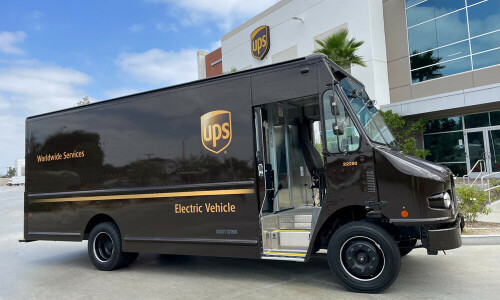UPS to Eliminate 20,000 Positions Amid Economic Uncertainty
United Parcel Service (UPS) has declared that it will reduce its workforce by 20,000 positions in an effort to decrease expenditures amidst an unstable economic climate. This decision comes as the parcel delivery giant anticipates diminished volumes from its largest client, Amazon. However, the company’s first-quarter profit surpassed market predictions.
The company’s shares experienced a surge of nearly 2% in pre-market trading on Tuesday following the announcement. The firm anticipates savings of $3.5 billion in 2025 through these job cuts and the closure of 73 leased and owned facilities by the conclusion of June.
Trade deceleration attributed to substantial tariffs imposed by former U.S. President Donald Trump has prompted businesses to curtail expenses in preparation for a potential decline in demand. This downturn is expected to diminish the requirement for shipping services among parcel delivery companies.
CEO Carol Tome remarked, “The measures we are implementing to restructure our network and lower costs across our operations are exceptionally well-timed.”
Despite cost-cutting strategies involving job reductions, facility closures, enhanced automation, and asset liquidations, UPS stated that it would not revise its full-year projections due to the prevailing economic ambiguity.
Evercore ISI analyst Jonathan Chappell commented, “The withdrawal of 2025 guidance is likely to produce a broad spectrum of potential results that may prove challenging to assess accurately without greater macroeconomic clarity.”
UPS had previously reduced its workforce by 12,000 positions in the prior year. The company foresees expenses ranging from $400 million to $600 million in 2025, primarily associated with severance benefits and lease-related obligations.
In January, the Atlanta-based firm cautioned about accelerating its strategy to curtail millions of deliveries for Amazon.com, its largest customer, which accounted for 11.8% of its total revenue in 2024.
Additionally, UPS is contending with a notable decrease in volume from Chinese e-commerce platforms like Temu and Shein. This follows the U.S. decision to impose tariffs, effective May 2, on goods previously exempt from duties up to $800 per individual sale.
UPS’s first-quarter revenue experienced a slight decrease to $21.5 billion but surpassed Wall Street estimates of $21.05 billion, as per data compiled by LSEG.
The U.S. domestic segment’s revenue saw a 1.4% increase to $14.46 billion in the first quarter, fueled by a surge in air cargo and improved revenue per piece, despite a decrease in volumes.
UPS reported an adjusted profit per share of $1.49, exceeding expectations of $1.38.
In January, the world’s largest package delivery company had projected full-year revenue of $89 billion and an operating margin of approximately 10.8%.



Comments (0)
No comments yet. Be the first to comment!
Leave a Comment